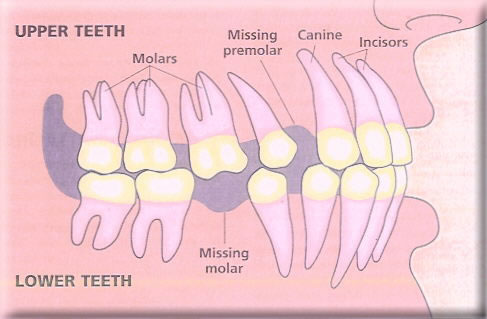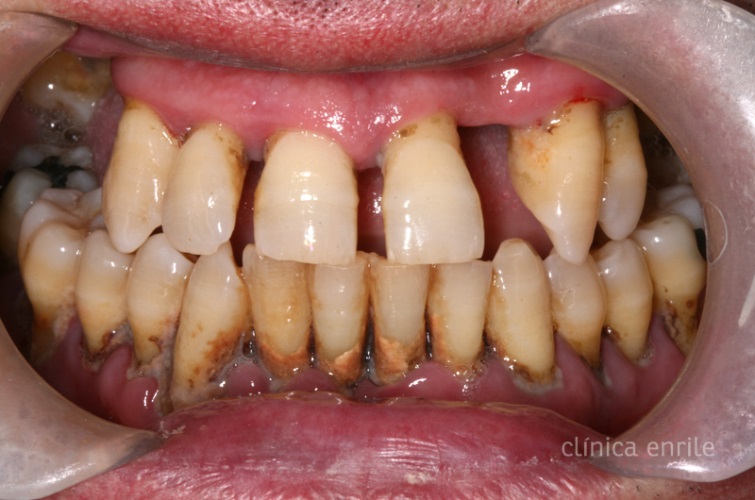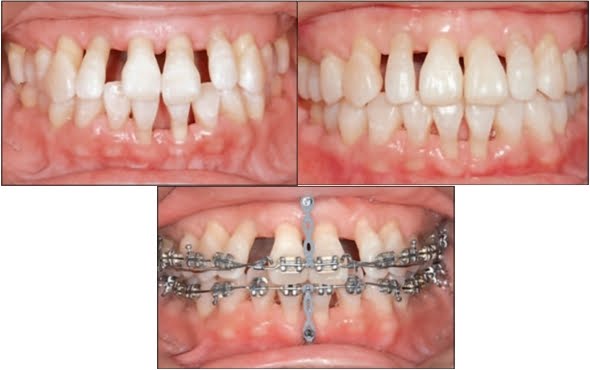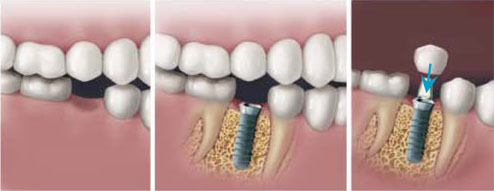Significance
A pleasing smile is a very desirable trait among many individuals. An increasing number of people are placing more emphasis on their oral health as part of their overall well-being. Well aligned teeth with no spaces in between has become the goal that many people are trying to achieve and maintain. Therefore if teeth start to move out of position unintentionally, it becomes totally undesirable.
Unintentional movement results in spaces developing between teeth. It also may result in the change of the orientation of teeth ie. teeth start to tilt or rotate. These changes negatively affect the appearance of the individual and well as the function. When aesthetics is affected, it may result in deterioration of the individual’s self-esteem and confidence. Whereas if the movement of teeth is severe enough to affect function, this will result in the inefficient chewing of food which may ultimately lead to poorer nutrition and subsequent health problems.
Our teeth are essentially kept in place by the balance of forces acting upon them. For example, the tongue will tend to push the teeth out but this force is balanced by the muscles of the upper and lower lip. Each tooth in the mouth helps the neighbouring tooth stay in place by not providing space for movement. Additionally, tiny ligaments that connect the tooth to the bone (ie. periodontal ligaments) also play an important role in ensuring that our teeth stay in place.
Causes
The undesired movement of teeth happens when there is an upset to the balance of forces in the mouth. These causes can be divided into two categories, which are;
- non-disease related movement
- disease related movement
Non-disease related movement
The main cause of non-disease related movement of teeth is tooth extraction without subsequent replacement. Although it does not happen to everyone, the incidence of teeth moving apart because of extractions of adjacent teeth is nevertheless relatively high.
When a tooth is removed, this results in a space. Overtime, the opposing tooth or the adjacent teeth may start moving into the empty space. If more than one tooth is extracted, this will result in more movement. The movement of teeth immediately adjacent to the empty space will eventually result in movement of the other teeth as well. In the end unsightly spaces will develop between teeth.

illustration from http://www.rydedentalcare.com.au/
Other causes of non-disease related movement are such as incomplete orthodontic treatment and wear and tear of dental fillings. Individuals who wear braces as part of their orthodontic treatment are at risk of having their teeth moving apart if they do not follow the instructions of the orthodontist. After the braces have been removed, quite often the patient will need to wear an appliance such as retainer to make sure the teeth stay in position. If they do not wear the appliance according to instructions, their teeth may start moving apart.
Dental fillings which have been in the mouth for many years will experience wear and tear. As the fillings are worn down, small spaces will develop which can allow for small movements of teeth. This is especially true for fillings located between teeth. Although the movement is very slight, it may nevertheless still affect the overall appearance of the patient.
Disease related movement
Gum disease or Periodontal disease is the cause of disease related movement of teeth. Gum disease is basically a disease that affects the supporting structures of our teeth, which comprises of the gums and bone. This disease is caused by bacteria that live in the mouth. When our brushing habits are not efficient enough to remove bacteria which grow on our teeth, gum disease develops. Initial stages of gum disease will manifest as inflammation of the gums, also known as Gingivitis. The individual will experience bleeding when brushing and possibly a bad mouth odour. Advanced gum disease, also known as Periodontitis, happens when gingivitis is not treated and the disease is allowed to progress. At this stage the bone that holds the tooth is slowly destroyed by toxins released by the bacteria. Overtime, as more bone is destroyed teeth start to become loose. Loose teeth will start to move apart and spaces will develop between teeth. Eventually, the affected teeth will become extremely loose and will have to be extracted.

Picture from http://www.buccasana.es/
Treatment
To correct the problem of spaces which have developed between teeth, the cause of the problem must be identified and treated accordingly.
If the movement of teeth is cause by gum disease, the individual needs to be treated by a Periodontal specialist. The gum disease must be treated and brought under control. Once the disease has been treated, options to close the spaces can be explored. The most effective method would be closure of the open spaces with braces, followed by replacement of the missing teeth, if any.

Picture from World J Orthod 2009;10:350–360
The same treatment protocol is also recommended to treat non-disease related tooth movement. Once the spaces have been closed, the missing tooth or teeth needs to be replaced. The options to replace missing teeth would be dentures, dental bridges or dental implants.

* Single tooth replacement with a dental implant
Prevention
The best way to prevent unwanted spacing of teeth is to ensure an overall healthy oral environment. By preventing tooth loss and gum disease, the undesirable movement of teeth can be avoided. Always be mindful of the early signs of gum disease. Consistent bleeding when brushing is an indication of gingivitis. If detected early, it can be successfully treated with no lasting adverse effects.
Optimal oral hygiene and regular check ups with the dentist is the only way to maintain good oral health. Remember, dental cavities and gum disease always starts from poor oral hygiene. If toothbrushing is done the right way with the right instruments, these problems can be avoided. Always ask your dentist for advice.
References
- Eduardo Y.S, Bonsiva S. Treatment Of A Periodontally Compromised Patient With Mini-Implant Anchorage. World J Orthod 2009;10:350–360.
- Lang N.P, Lindhe J. Clinical Periodontology and Implant Dentistry. Fifth edition 2008.
- Storey E. The nature of tooth movement. American Journal of Orthodontics 1973;3:292314.
| Last Reviewed | : | 19 June 2015 |
| Writer | : | Dr. Renukanth a/l Patabi Cheta Raman |
| Accreditor | : | Dr. Sa’adiah bt. Yusoff |







